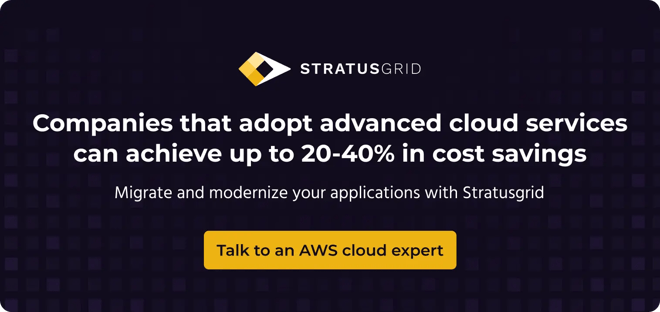Migrating to the cloud improves innovation, cost-control, and security, as well as other benefits. Following best practices will ensure that you don’t face any hurdles.
During The Pre-Migration Phase
Before starting your migration your main challenge is to get everyone on board, and focused on an effective, smooth, and well-planned migration.
- Start with the why: Before a migration (or any large project), it’s important to include everyone. That means that you need to talk to your C-level executives, analysts, and teams work alongside you. It’s one thing to walk into a room and announce what you’re going to do, and instruct others on how and what they’re going to do to help you. But if you start with explaining why you want to migrate to the cloud, how it’ll help them, and free them up to spend time on more strategic or interesting projects, people will want to follow you and participate in the project.
- Plan the future: Analyze your current processes and discuss how you want them to look in the cloud. What should be changed, removed, kept? If you consider your operations early, you’ll sort that part quickly and meaningfully before going back to the big picture. It also ensures that your new environment will be linked to your business strategy and goals.
- Choose your guide: You can migrate to the cloud without a partner. But choosing an experienced consultant who has the technical expertise and business knowledge to move your assets to the cloud with the least amount of inconvenience and stress will make a huge difference for you and the team. Possibly you have people in-house who can do that. Otherwise you can look outside, StratusGrid is an AWS Premier Partner with over a decade of experience. You can also look at Google Cloud or Microsoft Azure partners.
- Discuss the how: Now’s the time to talk about how and what you’re going to migrate to the cloud. What applications will be easiest to migrate? Which are the most strategic? And how will you move each one to the cloud efficiently?
- Teach the team: Before beginning the actual migration part of your project, you need to provide your team with the right training. If they haven’t worked with your chosen cloud platform before, you can get them to do basic courses. Otherwise, specific training on how to migrate to that environment. It will help employees with their development and help you to migrate better.

During The Cloud Migration Execution Phase
During the actual migration, tensions can run high. It’s a big project, and if it doesn’t go smoothly there can be friction between teams. Connecting people and automating as much of the migration process as possible can make a big difference.
- Quick wins: Having small wins make a huge difference for team morale, and stakeholder confidence. Your staff will be more comfortable with the tools and learning, and your C-level execs will be happy with their investment. Sharing quick wins improves transparency, confidence and enthusiasm.
- Automate it: The cloud saves time partly through its incredible automation. Use it! Adjust your processes to the cloud, put guardrails in place so that your team doesn’t have to stress. Don’t fall into the trap of moving to the cloud, but not modernizing with it.
During The Post-Migration Phase
Breathe, you’re almost done! You now need to monitor your new environment and learn more about it.
- Keep an eye on it: After you’ve migrated, it’s important to monitor your cloud comprehensively. Ensuring that you have data on how your environment is performing, and that it is working correctly is key. It will also help you to make data-driven decisions about your business performance.
- Speak to support: If you have a consultant, then you should be able to speak to them. But if you don’t, or want to go straight to the source, consult your provider’s support team. Leverage their knowledge to improve your processes, environments, and know-how.
Top 3 Best Practices for Large Migrations
A large migration is defined by AWS as moving 300 or more servers at once to the cloud. It poses a huge challenge to move so many servers at once, especially as cloud processes and technologies tend to be new for the enterprise.
- Follow the leader: To manage a large scale migration, you need to have one technical leader who is completely focused on the project. It’s their responsibility to take the big decisions on the project and ensure everyone is working together.
- Document everything: Document the whole process and who is responsible for what. It’s important to have processes written down so they can be consulted and shared with the whole team. Creating a responsible, accountable, consulted, informed (RACI) matrix can also help everyone to work together better.
- Test, test, test: Testing your processes consistently both before and after migrating is important to make sure that nothing goes down. If you work with a cloud consultant they can help you to test your processes effectively.
Looking to Migrate to AWS? Partner with the Cloud Experts at StratusGrid
At StratusGrid, we embrace the power of automation and DevOps practices. We integrate automation into every stage of the migration process. We have over 10 years of experience in AWS cloud migrations and we’re dedicated to safeguarding your data and applications.
Reach out to us today to learn more about how we can help you.
